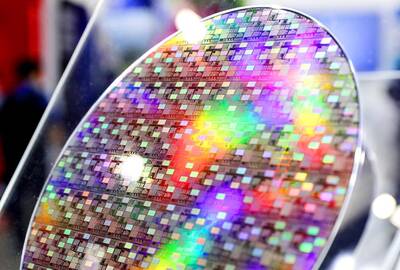Japan’s economy contracted at the fastest pace in 35 years in the fourth quarter as a collapse in export demand drained life from the world’s second-biggest economy.
Japan’s GDP dropped at an annual pace of 12.7 percent in the October-December period, the government said yesterday.
That’s the steepest drop for Japan since the oil shock of 1974 and far outpaces declines of 3.8 percent in the US and 1.2 percent in the euro zone. A survey of economists by Kyodo news agency had projected an 11.6 percent contraction.
Japan now faces “the worst economic crisis in the postwar era,” said Economy Minister Kaoru Yosano, Kyodo reported.
Already, Toyota Motor Corp, Sony Corp and a slew of other companies have announced deep job cuts and projected net losses for the full fiscal year through March. The yen’s appreciation, which erodes income from abroad has only intensified the pain.
Japan’s economy has now contracted for three straight quarters.
Compared to the third quarter, GDP fell 3.3 percent. If that rate continued for a full year, the economy would contract 12.7 percent.
For all for last year, it shrank 0.7 percent — the first decline in nine years, the Cabinet Office said.
Martin Schulz, an economist at Fujitsu Research Institute in Tokyo, said the three main pillars that lifted Japan out of the so-called “lost decade” of the 1990s had crumbled — favorable exchange rates, overseas investment and demand, and old industry such steel, cars and chemicals.
“The recovery was unsustainable,” Schulz said. “It was built on a major global bubble, and now basically the economy is paying the price.”
Japan’s exports plummeted a record 13.9 percent in the fourth quarter from the third quarter, the government said, as the deepening global slowdown choked off demand for the country’s cars and gadgets.
Capital expenditure — business investment in factories and equipment — fell 5.3 percent from the previous quarter, while consumer spending slipped a modest 0.4 percent.
Japan slipped into recession in the third quarter after its economy contracted two straight quarters — a common definition of recession — though many economists using other parameters say that the current downturn actually began in late 2007.
To revive the economy, Japan’s parliament passed a contentious ¥4.8 trillion (US$52.2 billion) stimulus plan last month that includes a cash payout that amounts to ¥12,000 per Japanese taxpayer. Japanese Prime Minister Taro Aso — who faces dismal approval ratings — has championed the idea, saying it will stimulate sagging consumer spending.
Media reports over the weekend said Japan may be considering additional measures to shore up the economy with fresh spending likely to top ¥10 trillion.
Japan’s central bank, which lowered its key interest rate to 0.1 percent in December, has introduced various steps to try to thaw a corporate credit crunch. But there is little it can do to address the unprecedented decline in external demand.
The Bank of Japan policy board is scheduled to start a two-day meeting tomorrow.

WAITING GAME: The US has so far only offered a ‘best rate tariff,’ which officials assume is about 15 percent, the same as Japan, a person familiar with the matter said Taiwan and the US have completed “technical consultations” regarding tariffs and a finalized rate is expected to be released soon, Executive Yuan spokeswoman Michelle Lee (李慧芝) told a news conference yesterday, as a 90-day pause on US President Donald Trump’s “reciprocal” tariffs is set to expire today. The two countries have reached a “certain degree of consensus” on issues such as tariffs, nontariff trade barriers, trade facilitation, supply chain resilience and economic security, Lee said. They also discussed opportunities for cooperation, investment and procurement, she said. A joint statement is still being negotiated and would be released once the US government has made

‘CRUDE’: The potential countermeasure is in response to South Africa renaming Taiwan’s representative offices and the insistence that it move out of Pretoria Taiwan is considering banning exports of semiconductors to South Africa after the latter unilaterally downgraded and changed the names of Taiwan’s two representative offices, the Ministry of Foreign Affairs (MOFA) said yesterday. On Monday last week, the South African Department of International Relations and Cooperation unilaterally released a statement saying that, as of April 1, the Taipei Liaison Offices in Pretoria and Cape Town had been renamed the “Taipei Commercial Office in Johannesburg” and the “Taipei Commercial Office in Cape Town.” Citing UN General Assembly Resolution 2758, it said that South Africa “recognizes the People’s Republic of China (PRC) as the sole

NEW GEAR: On top of the new Tien Kung IV air defense missiles, the military is expected to place orders for a new combat vehicle next year for delivery in 2028 Mass production of Tien Kung IV (Sky Bow IV) missiles is expected to start next year, with plans to order 122 pods, the Ministry of National Defense’s (MND) latest list of regulated military material showed. The document said that the armed forces would obtain 46 pods of the air defense missiles next year and 76 pods the year after that. The Tien Kung IV is designed to intercept cruise missiles and ballistic missiles to an altitude of 70km, compared with the 60km maximum altitude achieved by the Missile Segment Enhancement variant of PAC-3 systems. A defense source said yesterday that the number of

Taiwanese exports to the US are to be subject to a 20 percent tariff starting on Thursday next week, according to an executive order signed by US President Donald Trump yesterday. The 20 percent levy was the same as the tariffs imposed on Vietnam, Sri Lanka and Bangladesh by Trump. It was higher than the tariffs imposed on Japan, South Korea and the EU (15 percent), as well as those on the Philippines (19 percent). A Taiwan official with knowledge of the matter said it is a "phased" tariff rate, and negotiations would continue. "Once negotiations conclude, Taiwan will obtain a better